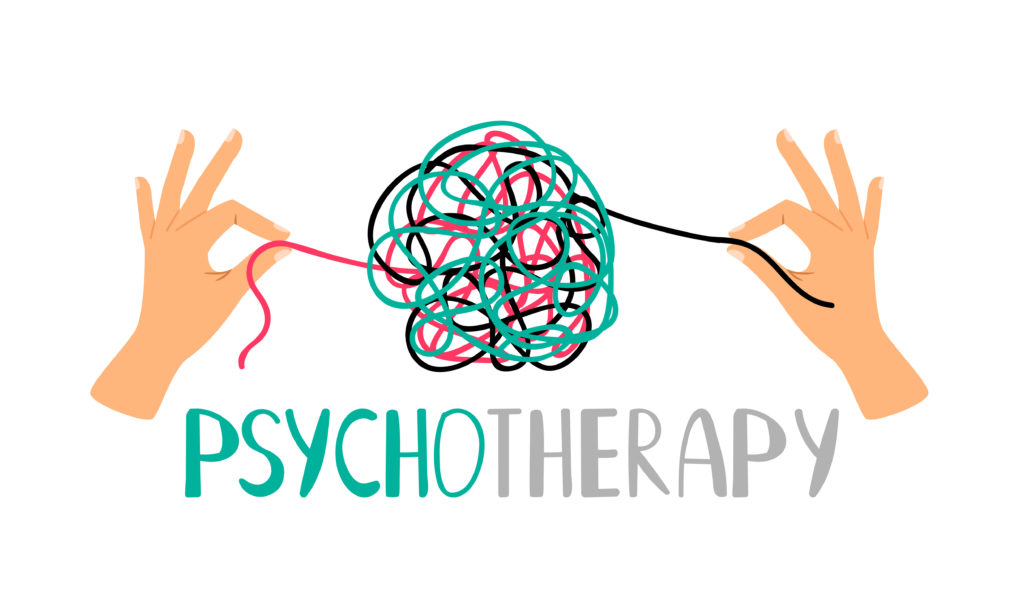Supportive Psychotherapy
Over the last 40 years, the number of people who are patients in psychiatric hospitals has declined by more than one-half thanks to the new antipsychotic drugs and the changing attitudes toward the mentally ill. However, most of these patients have not gone back home totally cured. In fact, a much larger number of people are emotionally disturbed and have never been to any mental hospital. Today, more than ever before, emotional and mental illnesses are very common. Many people suffer from emotional disturbances and there are several whose disturbances are longer and profound, and whose functioning is impaired. Their living conditions are often unsatisfactory even though they may be living at home. In fact, their families and everyone around them also find it challenging. They all need treatment to get better.
Today many professionals and para-professionals from different disciplines and occupations are getting involved in conducting psychotherapy within the community. In addition to the psychiatrists and psychologists, there are social workers, family doctors, welfare workers, home nurses, drug counselors, school counselors, marriage counselors, occupational and recreational therapists, industrial counselors, ministers and other pastoral counselors, probation officers and several others.
All these different professionals come across emotionally disturbed people and try to help them. Their aim is to achieve the same objective as that of a trained therapist. They try to relieve ant. They are the ones who are changing the lives of the emotionally disturbed people. Nevertheless, the people who have the greatest influence on the emotionally disturbed, are their families.their emotional distress and help them avoid the inappropriate behaviors that are characteristic of emotional illness and disturbance. However, to be able to achieve their objective, they need to have some understanding of the nature of emotional illness and the process of psychotherapy. Hence, it is important that they have some understanding of psychotherapy.
Psychotherapeutic techniques are an integral part of the process of caring and hence it is important that they learn these well. The influence of these ‘collateral therapists’ is indeed signific They are together very often. They know better than anybody else about the feelings and thoughts of the emotionally disturbed and they care.
Unfortunately, at times the complications and rivalries in the family may interfere with their willingness to help those who are emotionally disturbed. This can lead to a clouded judgement and in turn, worsen the affected person’s condition, rather than improve it. At times, they may the cause for the emotional problems. Nevertheless they can learn to behave differently and become therapists. They are the patient’s principal resource.
Psychotherapy is more of an attitude and a way of being with the patient rather than a precise technique. It can be learned. Unfortunately, it is not always possible for everyone to find a professional for supervision or instruction. As a result, family members have to struggle, not only in dealing with the patient’s problems but even with their own sense of inadequacy.
Supportive Psychotherapy Process
In supportive psychotherapy, a therapist tries to help patients in dealing with their emotional disturbance and problems in living. It consists of processes like listening attentively and sympathetically and comforting, reassuring, encouraging, and advising the patient. The therapist provides an opportunity for patients to be themselves and to express themselves freely. During the course of the treatment, the therapist may inform his patient about the problem or illness and advise him or her on how to manage it. He may even intervene, if required, on behalf of the patient when dealing with authorities such as social agencies, schools and the patient’s family.
The therapist may have to explain his patient’s behavior to others or the behavior of others to his patient. The role of the therapist is to educate his patient about the crucial rules that govern all social interaction. Usually, the therapist serves as a model of appropriate behavior and implicitly conveys to the patient an ideology about the way that life has to be led. He encourages his patient to expand his interests in the world through participation in sports and hobbies or by making friends or by going to work.
In insight technology, the process is relatively prolonged. The techniques usually consist of dreams, resistances, defense mechanisms and transference reactions to the therapist. Current techniques may include specific prescriptions for particular states of anxiety. In this sense, the supportive therapist’s inputs appear more superficial as he handles daily events of the patient’s life rather than interpreting his unconscious. He appeals to the patient’s conscious mind rather than the unconscious part. He is keen to know what his patient tells him, (which is what interests the psychoanalyst). He is also interested in whatever he can get from the patient’s family, friends or others.
This treatment may go for longer periods than insight psychotherapy. The therapy may be conducted at irregular intervals or infrequently. It may even be very intensive for a short period of time. Indicators for each treatment are somewhat different. The patient who is recommended insight therapy is usually motivated, intelligent, well off financially and relatively intact emotionally. He is one who can afford the cost of the treatment in time and money.
The patient who is recommended supportive therapy is usually poorer, less capable and sicker. He may be less able to tolerate the anxiety of looking at himself objectively. Of course a person need not be sick to a particular degree or suffer from any special kind of illness, to benefit from supportive psychotherapy. He may be schizophrenic, depressed, sexually disturbed or neurotic. He may be in crisis or be chronically ill. The therapist behaves differently, depending on whether he is providing insight therapy or supportive psychotherapy.
In insight therapy, the therapist tries to be anonymous by keeping his introduction as brief as possible to to avoid causing prejudice to the patient and his attitude. He thinks twice before speaking and before giving advice to the patient.
On the other hand, while providing supportive therapy, he is active and involved. He gives advice to the patient who may be very disturbed in dealing with his day-to-day problems. He appears to be more open and reassuring to the patient. He may even describe his own feelings and talk about his own life to demonstrate a point.
Treatment of emotionally disturbed people cannot be considered as a fixed formula. There may be occasions when a patient in insight psychotherapy may need active support and intervention from the therapist. It is also possible that at times a sick patient accepts certain insights about himself. The main point to remember is that supportive therapy is not just in the hands of psychiatrists and psychologists, but can be conducted by others too. A person who lives with an emotionally disturbed person undoubtedly plays the role of a therapist. He is actually conducting a supportive role, if he cares for that person.








